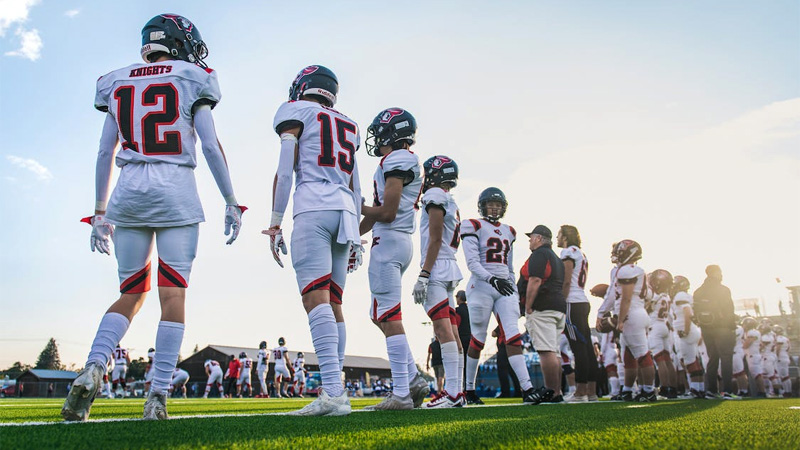American football’s thrilling spectacle is orchestrated by the synchronization of various player positions, each contributing uniquely to the team’s success. “How Many Players Are There In An American Football Team” unveils the intricacies of this sport’s lineup dynamics.
With 11 players on the field at a time, the composition spans offensive powerhouses, defensive stalwarts, and the precision of special teams. From quarterbacks orchestrating plays to defensive linemen thwarting advances, each player fulfills a specialized role.
Unraveling the layers of positions and the nuanced game strategy reveals the symphony of skills needed for gridiron glory. Let’s delve into the anatomy of an
American football team, exploring the significance of each position and the collective efforts that propel teams to victory.
How Many Players Are There In An American Football Team?
In American football, a team typically consists of 11 players on the field at a time. This is broken down into three main units:
Offense
- Quarterback (QB): 1
- Offensive Linemen (OL): 5 (center, two guards, two tackles)
- Wide Receivers (WR): 2 or more
- Running Backs (RB): 1 or more
- Tight End (TE): 1
Defense
- Defensive Linemen (DL): 3 or 4 (defensive tackles and defensive ends)
- Linebackers (LB): 3 or 4 (inside and outside linebackers)
- Defensive Backs (DB): 4 or more (cornerbacks and safeties)
Special Teams
- Kicker (K): 1
- Punter (P): 1
- Long Snapper (LS): 1
- Kick Returner/Punt Returner: 1 or more
While there are 11 players on the field at a time, teams typically have a larger roster of players for substitution and strategic purposes. This allows coaches to bring in different players with specific skills for various situations.
How Does a Team in American Football Made?
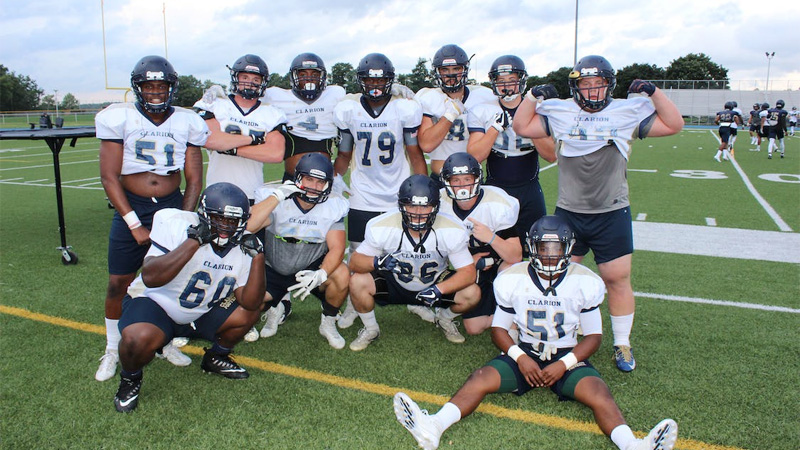
A team in American football is typically organized and composed through a multi-step process.
Here are the general steps:
Scouting and Recruitment
Teams often have scouts and personnel dedicated to identifying talented players. This can include college players looking to enter the professional league (NFL), as well as players from other professional leagues.
Draft
The NFL holds an annual draft where teams take turns selecting eligible players. The draft order is determined by the teams’ performance in the previous season, with the worst-performing team picking first.
The draft is a crucial process for teams to acquire new talent.
Undrafted Free Agents
Not all players are selected in the draft. After the draft concludes, teams can sign undrafted players as free agents. Some undrafted players go on to have successful careers in the NFL.
Training Camp
Teams conduct training camps before the start of the regular season. This is a crucial period for evaluating players, determining the final roster, and implementing the team’s strategies and systems.
Preseason Games
Before the regular season begins, teams play a series of preseason games. These games provide an opportunity for coaches to assess player performance and make final decisions about the roster.
Roster Cuts
After training camp and preseason, teams must trim their rosters to meet the league’s limit. The final roster typically includes active players, a practice squad, and injured reserve players.
Regular Season
The NFL regular season typically consists of 17 games for each team. The roster can be adjusted during the season due to injuries, trades, or other factors.
Playoffs
The top teams from each conference qualify for the playoffs, leading to the Super Bowl, where the champions of the NFC and AFC face off.
Throughout this process, coaching staff and management play crucial roles in evaluating player performance, making strategic decisions, and building a cohesive team.
Teams aim to have a balanced roster with skilled players in various positions to perform effectively in different game situations.
Game’s Structure And Key Components
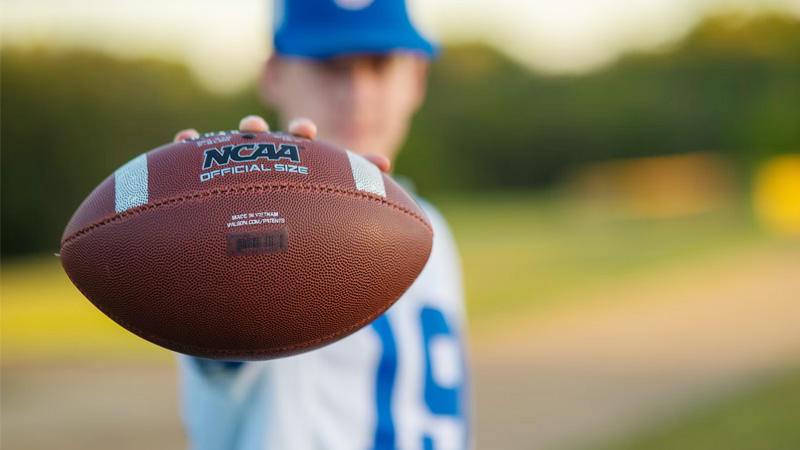
In American football, the game’s structure and key components involve three main units: the offensive lineup, the defensive lineup, and special teams. Each of these units plays a vital role in the game.
Offensive Lineup
The offensive lineup consists of players responsible for advancing the football down the field and scoring points.
- Quarterback (QB): The quarterback is the team’s leader on offense. They receive the snap from the center, make decisions on whether to pass, hand off the ball, or run, and throw passes to receivers.
- Offensive Linemen (OL): The offensive line is responsible for protecting the quarterback and creating running lanes for the running backs. It includes:
- Center (C): Snaps the ball to the quarterback and anchors the line.
- Guards (LG and RG): Play on either side of the center and block for both passing and running plays.
- Tackles (LT and RT): Line up on the outer edges of the offensive line and protect the quarterback’s blindside (left tackle) or strong side (right tackle).
- Wide Receivers (WR): These players run routes to catch passes from the quarterback. They include wideouts and slot receivers.
- Running Back (RB): The primary ball carrier who runs the football and can also catch passes.
- Tight End (TE): A versatile player who blocks like an offensive lineman and catches passes like a receiver.
Defensive Lineup
The defensive lineup’s main objective is to stop the offense from advancing and scoring points.
- Defensive Linemen (DL): They play on the line of scrimmage and include defensive tackles (DT) and defensive ends (DE). Their responsibilities include stopping the run, rushing the passer, and creating pressure on the quarterback.
- Linebackers (LB): Positioned behind the defensive line, linebackers are responsible for tackling runners, covering tight ends and running backs in pass coverage, and sometimes blitzing the quarterback.
- Defensive Backs (DB): The defensive secondary includes cornerbacks (CB) and safeties (SS and FS). Cornerbacks cover wide receivers, while safeties provide deep coverage and support against both the run and pass.
Special Teams
Special teams units are responsible for various aspects of the game that involve kicking and returning the football.
- Kicker (K): The kicker is responsible for kickoffs, field goals, and extra point attempts.
- Punter (P): The punter kicks the ball to the opposing team on fourth down when the offense doesn’t advance far enough for a first down.
- Long Snapper (LS): The long snapper is responsible for accurately snapping the ball to the holder or punter during field goal and punt attempts.
- Kick Returner/Punt Returner: These players catch and return kickoffs and punts to gain field position for the offense.
- Special Teams Coverage: Players on special teams also include gunners and coverage units that aim to prevent the returner from advancing the ball.
Each of these components works together to create a well-rounded football team, with offense, defense, and special teams contributing to the team’s overall performance and success on the field.
Roster Size and Substitutions
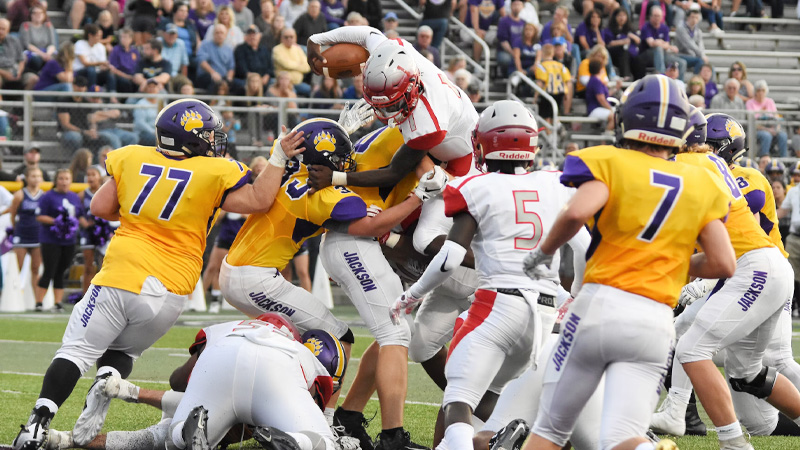
In the National Football League (NFL), teams are allowed to have a maximum roster size, which varies depending on the time of the year and specific league rules.
Here’s a breakdown of key roster limits:
Offseason Roster
During the offseason, including training camp and preseason, teams can have up to 90 players on their roster. This larger roster allows teams to evaluate a wide range of players before making final decisions.
Preseason Roster Cuts
Before the start of the regular season, teams must reduce their roster to 53 players.
This includes active players who will participate in games, as well as players on the injured reserve and practice squad.
Practice Squad
Teams are allowed to have a practice squad, which typically consists of up to 16 players.
Practice squad players are not eligible to participate in regular-season games but can practice with the team and be called up to the active roster.
Active Roster
During the regular season, teams have an active roster of 53 players. This includes all positions, both offensive and defensive players, and special teams.
Injured Reserve (IR)
Players who are injured and cannot participate for an extended period may be placed on injured reserve.
While on IR, they do not count against the 53-man roster limit, allowing teams to sign replacement players.
In American football, teams can make substitutions freely during stoppages in play. This allows coaches to tailor their lineup based on the situation, opponent, and game strategy. Key points regarding substitutions include:
Offense and Defense
Substitutions can be made between plays when the ball is dead, typically after a play has concluded. This allows teams to bring in different personnel packages based on whether they are on offense or defense.
Special Teams
Special teams substitutions are common during kicking plays (kickoffs, punts, and field goals). Teams often have specialized players for these situations, such as kickers, punters, long snappers, and return specialists.
Two-Way Players
While rare in modern football, there have been instances in history where players played both offense and defense.
However, this is uncommon at the professional level due to the specialized skills required for each position.
Quarterback Changes
Quarterbacks, as key players, may be substituted during a game. This can be due to injury, strategic decisions, or changes in game circumstances.
The backup quarterback is typically ready to enter the game if needed.
Substitutions provide coaches with flexibility and the ability to adapt to different game situations.
The rules and regulations regarding rosters and substitutions may vary in different football leagues, but the principles of roster management and player substitution remain fundamental to the sport.
The Evolution of Team Sizes in American Football
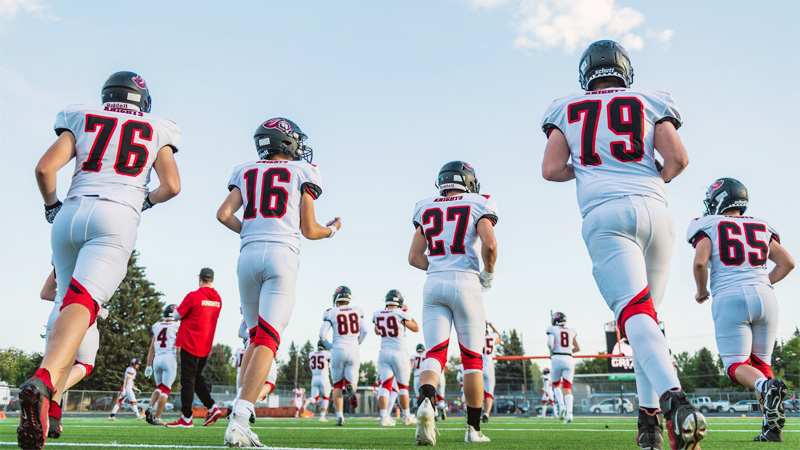
The evolution of team sizes in American football has been influenced by various factors, including changes in the rules, player safety considerations, strategic innovations, and the growth of the sport.
Here’s a general overview of how team sizes have evolved over time:
Early Years
In the early years of American football, dating back to the late 19th century, team sizes were smaller compared to modern standards. Teams were often composed of fewer than 11 players on the field.
Establishment of Standardized Rules
As the sport gained popularity, there was a need for standardized rules.
In 1880, Walter Camp, often considered the “Father of American Football,” played a key role in establishing rules that included a standard team size of 11 players.
Formation of Positions
Over time, the game evolved to include specific player positions, leading to specialized roles such as quarterbacks, offensive linemen, running backs, and defensive players.
Introduction of Substitutions
In the early years, substitutions were limited, and players often played both offense and defense.
As the sport progressed, rules allowed for more liberal substitutions, enabling teams to bring in specialized players for different situations.
Expansion of Roster Sizes
In the early days of the NFL, roster sizes were smaller compared to the present day.
Roster limits gradually increased to accommodate the need for more specialized players, especially as the game became more complex and strategic.
Practice Squads
The introduction of practice squads allowed teams to develop and retain talent beyond the active roster.
Practice squads provide an opportunity for young or developmental players to learn and contribute to the team without occupying a spot on the active roster.
Safety Measures
In recent years, increased awareness of player safety has influenced roster sizes.
The NFL, for example, has implemented rules and protocols related to concussions and injuries, affecting how teams manage their rosters and handle player substitutions.
Globalization and Specialization
The globalization of the sport and the expansion of developmental leagues have led to increased competition for roster spots.
Teams are continually looking for specialized talent, resulting in more extensive scouting efforts and larger rosters during off-season activities.
Innovations and Strategy
Changes in offensive and defensive strategies have also influenced team sizes. For instance, teams may prioritize specific positions or playing styles based on the prevailing trends in the league.
Ongoing Evolution
The evolution of team sizes in American football is ongoing, with leagues regularly reviewing and adjusting rules to address various aspects, including competitive balance, player safety, and the overall quality of the game.
The evolution of team sizes reflects the dynamic nature of American football, responding to a combination of factors that shape the sport at both the amateur and professional levels.
Rules and roster sizes may continue to evolve in response to the changing landscape of football and the broader sports industry.
FAQs
How many players are on the field at a time during an American football game?
An American football team has 11 players on the field at a time. This includes offensive players, defensive players, and special teams players, each with specific roles to contribute to the team’s success during a game.
Are there different positions for players in an American football team?
Yes, American football has various positions.
Key positions include quarterback, offensive linemen, wide receivers, running backs, tight end on offense, and defensive linemen, linebackers, and defensive backs on defense. Special teams also have specific positions like kicker and punter.
How many players are typically on an American football team’s roster?
During the regular season in the NFL, a team can have up to 53 players on its active roster. Additionally, teams can have a practice squad with up to 16 players. Roster sizes may vary in other football leagues.
Can a player play both offense and defense in American football?
While it’s rare in modern football, there have been instances of players participating on both offense and defense.
However, due to the specialized nature of positions and the physical demands, most players focus on one side of the ball.
Why are there different units like offense, defense, and special teams in American football?
American football is a complex game with distinct phases. Different units specialize in specific aspects of the game.
The offense aims to score points, the defense aims to prevent scoring, and special teams handle kicking and return plays, contributing to overall team success.
Wrapping Up
The question of how many players compose an American football team unfolds a narrative of collaboration, specialization, and strategic finesse.
From the quarterback’s leadership to the defensive linemen’s resilience, every player is a crucial cog in the machinery of success.
The dynamic interplay of offense, defense, and special teams demonstrates the multifaceted nature of this captivating sport.
As we grasp the essence of team composition, we gain a deeper appreciation for the orchestrated chaos that defines American football.
It’s a game where individual brilliance merges with collective unity, showcasing the true beauty of teamwork on the gridiron.

